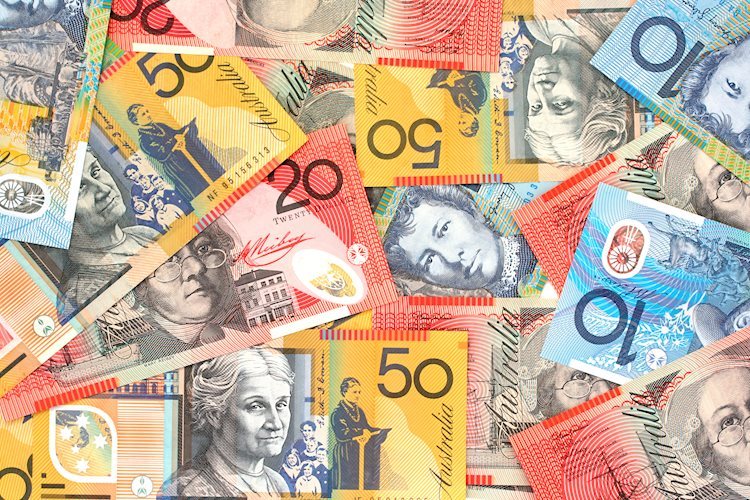- The Australian Dollar remains elevated after a release of lower-than-expected CPI data on Wednesday.
- The monthly Australian CPI rose by 2.1% YoY in September, coming in below the expected 2.3% and previous 2.7% readings.
- The US Dollar may appreciate due to market caution persisting amid uncertainty surrounding the US presidential election and US data.
The Australian Dollar (AUD) edges higher against the US Dollar (USD) despite lower-than-expected Australia’s third-quarter Consumer Price Index (CPI) data released on Wednesday. The upside of the AUD could be attributed to the hawkish sentiment surrounding the Reserve Bank of Australia’s (RBA) regarding its policy outlook.
The Australian Bureau of Statistics reported that the Consumer Price Index (CPI) rose just 0.2% quarter-over-quarter in the third quarter, down from 1.0% in the previous quarter and slightly below the anticipated 0.3%. The monthly CPI rose by 2.1% year-over-year in September, coming in below market expectations of 2.3% and down from August’s reading of 2.7%.
The US Dollar saw a slight downward correction as US Treasury yields edged lower. However, the USD’s downside may be limited, with market caution persisting due to uncertainty surrounding the upcoming US presidential election and anticipation of key US economic data releases.
Traders will likely watch the upcoming release of preliminary US Q3 Gross Domestic Product (GDP) figures and October’s Nonfarm Payrolls (NFP) report, as these could offer important insights into the timing and pace of the Federal Reserve’s (Fed) expected rate cuts.
Daily Digest Market Movers: Australian Dollar inches higher due to hawkish RBA
- The positive US economic data from last week indicates continued resilience in the economy. This supports the sentiment of nominal interest rate cuts by the Federal Reserve (Fed) in November. According to the CME FedWatch Tool, there is a 98.4% probability of a 25-basis-point rate cut by the Fed in November, with no expectation of a more substantial 50-basis-point cut.
- Australia’s CPI fell to 2.8% year-over-year from the prior 3.8%, marking the lowest level since Q1 2021 and coming in below market forecasts of 2.9%.
- The US Bureau of Labor Statistics (BLS) reported on Tuesday that JOLTS Job Openings reached 7.443 million in September, down from 7.861 million in August and falling short of the market expectation of 7.99 million.
- The Reserve Bank of Australia signaled that the current cash rate of 4.35% is sufficiently restrictive to guide inflation back to the target range of 2%-3% while continuing to support employment. As a result, a rate cut in November appears unlikely.
- ANZ-Roy Morgan Australia Consumer Confidence dropped to 86.4 this week, down from 87.5 the previous week.
- Last week, Federal Reserve Bank of San Francisco President Mary Daly stated in a post on the social media platform X that the economy is clearly in a better position, with inflation having fallen significantly and the labor market returning to a more sustainable path.
- RBA Deputy Governor Andrew Hauser highlighted the country’s strong labor participation rate last week and stressed that although the RBA relies on data, it is not overly fixated on it.
Technical Analysis: Australian Dollar remains above 0.6550 within the descending channel
AUD/USD trades near 0.6560 on Wednesday, with daily chart analysis indicating a short-term bearish bias as the pair remains within a descending channel. However, the 14-day Relative Strength Index (RSI) sits at 30, signaling an oversold condition that may lead to an upward correction.
On the support side, the AUD/USD pair could test the descending channel’s lower boundary around 0.6520, followed by the psychological level of 0.6500.
For resistance, the first hurdle lies at the upper boundary of the descending channel near 0.6590, with a psychological level of 0.6600 above that. A breakout above the latter could pave the way for the AUD/USD pair to reach the nine-day Exponential Moving Average (EMA) at 0.6619.
AUD/USD: Daily Chart
Australian Dollar PRICE Today
The table below shows the percentage change of Australian Dollar (AUD) against listed major currencies today. Australian Dollar was the strongest against the US Dollar.
| USD | EUR | GBP | JPY | CAD | AUD | NZD | CHF | |
|---|---|---|---|---|---|---|---|---|
| USD | -0.07% | -0.04% | -0.15% | -0.04% | -0.13% | -0.05% | -0.05% | |
| EUR | 0.07% | 0.03% | -0.08% | 0.03% | -0.06% | 0.02% | 0.02% | |
| GBP | 0.04% | -0.03% | -0.12% | -0.01% | -0.10% | -0.02% | 0.00% | |
| JPY | 0.15% | 0.08% | 0.12% | 0.11% | 0.03% | 0.10% | 0.12% | |
| CAD | 0.04% | -0.03% | 0.00% | -0.11% | -0.10% | -0.01% | 0.00% | |
| AUD | 0.13% | 0.06% | 0.10% | -0.03% | 0.10% | 0.09% | 0.09% | |
| NZD | 0.05% | -0.02% | 0.02% | -0.10% | 0.01% | -0.09% | 0.01% | |
| CHF | 0.05% | -0.02% | 0.00% | -0.12% | -0.01% | -0.09% | -0.01% |
The heat map shows percentage changes of major currencies against each other. The base currency is picked from the left column, while the quote currency is picked from the top row. For example, if you pick the Australian Dollar from the left column and move along the horizontal line to the US Dollar, the percentage change displayed in the box will represent AUD (base)/USD (quote).
Economic Indicator
Monthly Consumer Price Index (YoY)
The Monthly Consumer Price Index (CPI), released by the Australian Bureau of Statistics on a monthly basis, measures the changes in the price of a fixed basket of goods and services acquired by household consumers. The indicator was developed to provide inflation data at a higher frequency than the quarterly CPI. The YoY reading compares prices in the reference month to the same month a year earlier. A high reading is seen as bullish for the Australian Dollar (AUD), while a low reading is seen as bearish.
Read more.
Read the full article here

